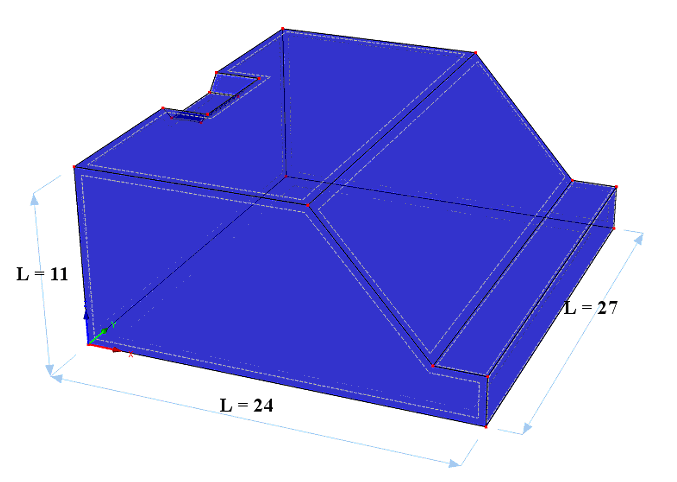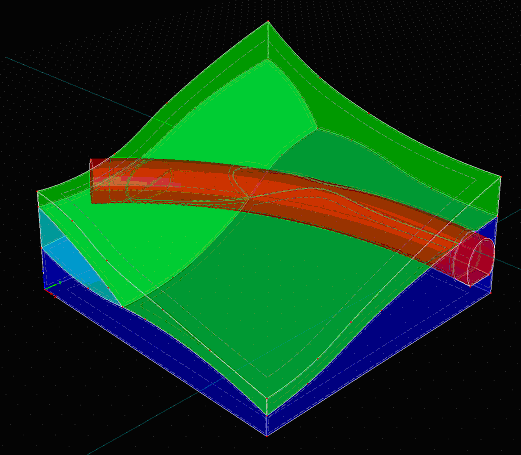In the 3D-Professional version, the Geometry (general three-dimensional domains) can be formed from three-dimensional objects (Solids, bodies) of general shapes. Three-dimensional objects are formed by boundary surfaces, which can be either Planar surfaces or curved surfaces (Quadrangle, Rotary, Pipe, B-Spline). In more complicated cases it is also possible to use Intersections of surfaces and solids and to create in this way openings in solids or to carry out with solids logical operations.
We recommend that you view our video tutorials to fully understand how to build 3D-General Domains at: http://www.pc-progress.com/en/Default.aspx?h3d-ver2-tutorials.
Examples of 3D-General Domains:
Tutorial 5.02 - A simple reservoir
This demo shows a design of a simple three-dimensional domain representing a reservoir. The domain is fully defined using Planar surfaces. You will learn how do design simple domains, while using different locations of a Work Plane, an Origin of a Coordinate System and of an Alignment Grid.

Introductory Example
Based on the "Tutorial 5.02 - A simple reservoir" (see the figure above) we have developed an Introductory Example (Water Flow from an Infiltration Basin to a Nearby River), in which you will go through all phases of preparing input (i.e., geometry, FE-Mesh, initial and boundary conditions, domain properties) for a HYDRUS project, running the executable module, and looking at the results. We have written a quite extensive text describing how to proceed during this example. You can download this text here: Introductory Example.
Tutorial 5.10 - Tunnel through a hill.
This demo shows a model of a more complex landscape with a tunnel through curved geological layers, created using an intersection of multiple surfaces. The hillside is defined using three major geological layers: the bottom layer (dark blue), the intermediate layer (light blue), and the surface layer (green), each defined using curved surfaces.

Related Topics